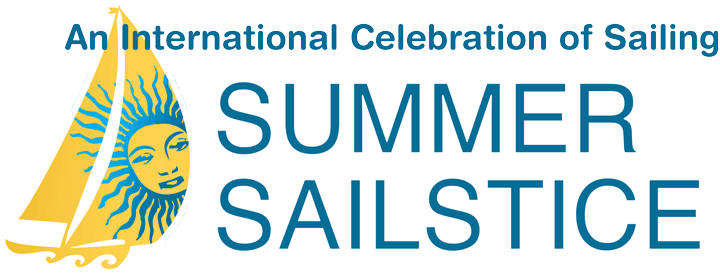
So says Steve Martin. It's not quite night in the Northern Hemisphere (unless you're in Sweden, Norway, Alaska or a few other places) but it is dark. But that all changes as the Sun hits the Tropic of Capricorn at 23 degrees, 27 minutes South on December 21st. For many of us these are the chlly months where we're trying to hang on to whatever sun we can.
The good news/bad news for today, December 21st, is its is the first day of winter but it also means just a 6-month countdown to summer. Are we forgetting the Southern Hemisphere? Absolutely not and we wonder if we have this sailing thing all upside down.
Think about it. Why is it most sailors live North of the equator when most of the water is South of the equator? Did you know 88% of the world’s population lives North of the equator and, excluding Antartica, 78% of the world’s land mass is North of the equator? Conversely, 78% of the world’s waters are South of the equator. There’s more water to sail on in the South but way fewer people to sail on it.
So far Summer Sailstice is primarily a Northern hemisphere event primarily because that’s where most of the sailors are. None-the-less we’ve always had some Southern hemisphere sailors participating on June 21st (RC Laser sailors in South Africa in 2013) and always tip our hat to the South on December 21st. Hey, their summer sailing season starts now! And the North begins its 6 month countdown.
What do we have to do to build the tradition in the South? Truth is, at some point, Summer Sailstice will be a biannual event with it always being held on the weekend closest to the summer solstice in the North and always the weekend before the Southern summer solstice in the South. More on the solstice:
Solstice comes from the Latin (sol, sun; sistit, stands). For several days before and after each solstice, the sun appears to stand still in the sky—that is, its noontime elevation does not seem to change. The Earth's axis in the Northern Hemisphere points the farthest away from the sun on the solstice and the sun is at its southern most point in the sky.
The date of the solstice moves. In 2014, it will be on Dec. 21 again, but by 2015 it will be on Dec. 22. You can see the dates through 2020 here: U.S. Naval Observatory.
Meteorological winter is December 1-February 28, the three coldest months of the year however, astronomical winter starts with the winter solstice on December 21, 2013 and continues through the spring equinox March 20, 2014.
Of course the solstice has been celebrated long before it became a sailing celebration: the Incans erected a monument to the event called the Intihuatana Stone, or Hitching Post of the Sun, at Machu Picchu. In ancient Pakistan, the Kalash Kafir celebrated Chaomos on the solstice which involved both ritual baths and a torchlight procession. In Sweden, midsommer continues to be one of the biggest, annual celebations. In Rome, the midwinter feast of Saturnalia fell at the time of the Winter Solstice. The Chinese have celebrated Dongzhi to mark the Winter Solstice since the Han Dynasty.
The summer solstice was chosen as the ideal date for a global sailing celebration for several reasons: the long relationship with sailing and celestial navigation, for much of the Northern Hemisphere summer is the start of the traditional sailing season and, of course, school's out, the days are long and there's more time for sailing!
